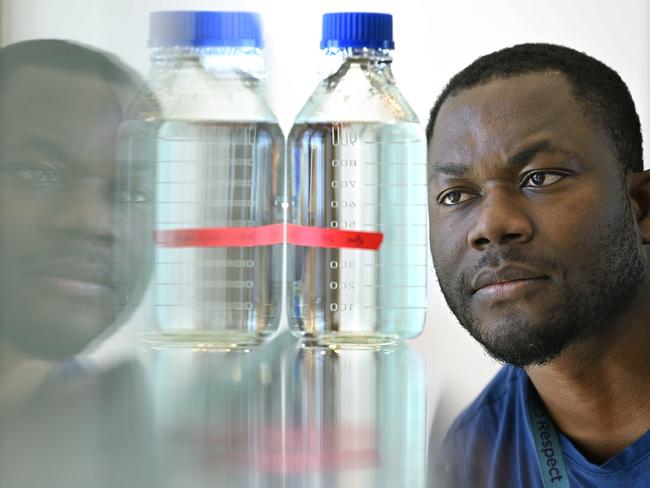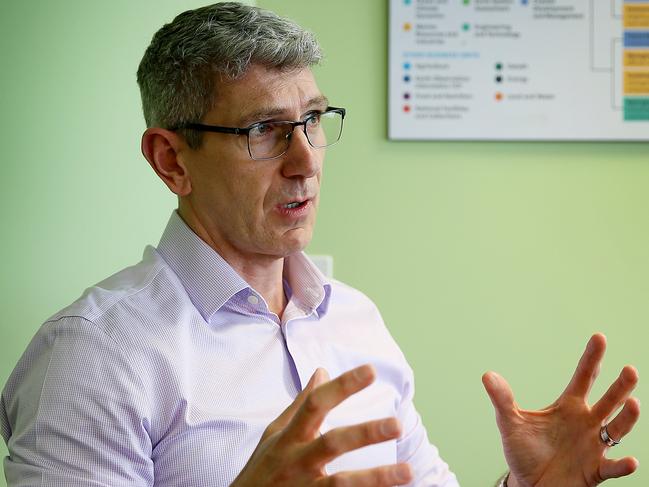Revealed: how much plastic is in our water
For the first time, researchers have discovered just how many particles of nanoplastic lurk in our drinking water - amid concerns about what it means for human health.
They’re so small they can’t be seen with the naked eye, but new cutting edge research has found an abundance of nanoplastics in the water we drink, raising concerns about what this might mean for human health.
Microplastics are small fragments measuring up to 5mm, but nanoplastics are absolutely minuscule, measuring no more than one micrometre – about one sixtieth the size of a grain of salt.
In a scientific paper published in the Journal of Hazardous Materials, Dr Elvis Okoffo from the University of Queensland shared his analysis of the presence of nanoplastics in water from various sources in Australia.
His research found nanoplastics in municipal water supplies (440 particles per litre in one sample and 380 in another), as well as store-bought bottled water (360 particles per litre in one brand and 220 in another, both unnamed).

Even higher levels were found in reservoirs, surface water, stormwater and wastewater - but because the field of research is so new, a “safe” level of prevalence cannot be determined.
Eight different types of plastics were detected, the most prevalent being polyethylene (PE),
poly (ethylene terephthalate) (PET), polypropylene (PP) and polystyrene (PS).
Dr Okoffo – Elvis is a common name in Ghana, where he was born – said it was not clear from this research how the nanoplastic particles were getting into the municipal water supplies, but there was “a lot of variability in the plastic concentrations” between different houses.
“Whether it’s actually coming from the lines, the pipes attached to our homes, or whether it’s actually being generated from the treatment plant … we need to investigate further because this was just to look at the final product, what is being consumed,” he said.
Dr Okoffo’s findings come amid escalating concern about plastic’s effect on the human body.
On Friday, Professor Lukas Kenner from the Medical University of Vienna warned that cancer cells “spread at an accelerated rate” after contact with microplastics, and unborn children were most at risk, as plastic particles in the placenta could be transferred to embryos.
That warning came ahead of fresh negotiations for a Global Plastics Treaty, commencing in Ottawa, Canada, on Tuesday.
Twiggy and Nicola Forrest’s Minderoo Foundation will be a presence at the negotiations, sharing research that shows plastic particles are in Ottawa’s rainwater and drinking water at even higher levels than found by Dr Okoffo in his Australian study.
According to the Minderoo research, adult Ottawans who drink their recommended daily intake of water (2.5 litres) will consume at least 383 microplastic and 5111 nanoplastic particles every day.

Dr Yannick Mulders, Research Associate in Plastics and Human Health at the Foundation, said the link between plastic particles and disease was “one of those unknown unknowns”.
“We have only just started measuring [these particles] in water and we’re not currently able to measure nanoplastics consistently and effectively in human biosamples, which means we cannot associate exposure to human health outcomes,” he said.
But there are concerns the increasing prevalence of microplastics and nanoplastics in our bodies could be behind some of the troubling health conditions that have been on the rise in recent decades, including decreased birth weight, type two diabetes, endometriosis and polycystic ovary syndrome, Dr Mulders said.
Dr Tony Worby, Chief Scientist with the Minderoo Foundation, said negotiators at Ottawa had a “pivotal opportunity to shield humanity from further harm by forging a robust and ambitious Global Plastics Treaty”.
“Plastic pollution does not belong in our bodies or the environment. Current regulations fall short in curbing toxic chemical use, emphasising the need for stricter policies and consumer advocacy,” he said.
More Coverage
Originally published as Revealed: how much plastic is in our water





